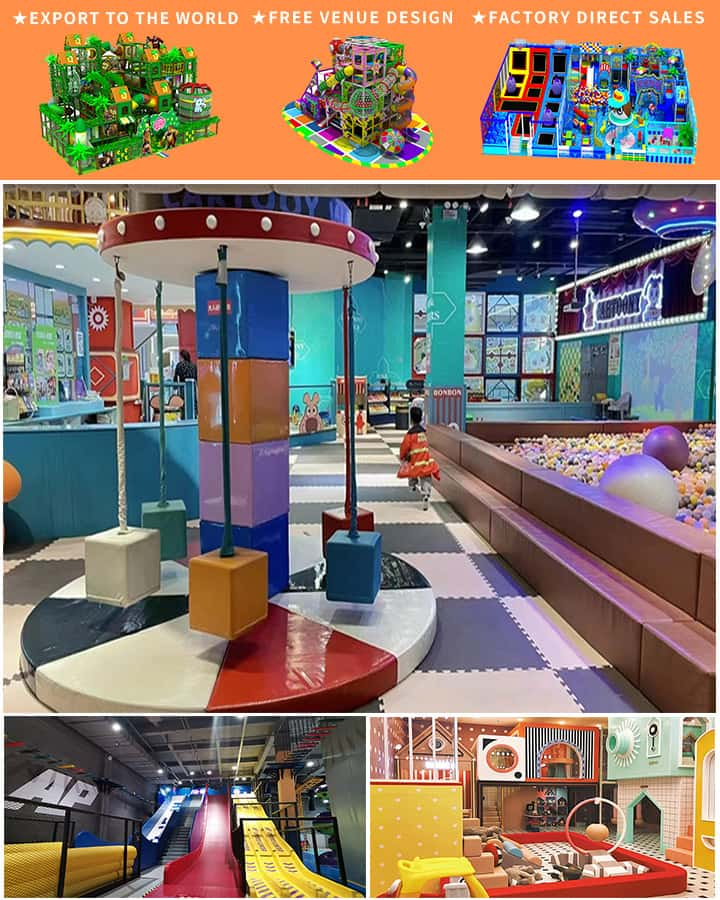In today’s fast-paced world, the significance of well-designed indoor playgrounds cannot be overstated. With more families opting for safe, educational, and enjoyable environments for their children to play and grow, modern indoor playground design has become a vital aspect in architecture and family entertainment. This article will explore the key elements that contribute to an exceptional indoor playground experience, focusing on safety, creativity, inclusivity, and sustainability.
Safety First: Non-Negotiable Standards
Safety is the cornerstone of any indoor playground design. From the selection of materials to the layout of equipment, every detail must prioritize the well-being of the children. Non-toxic, durable, and easy-to-clean materials are essential. Rubber flooring is often used to cushion falls, while rounded edges and smooth surfaces minimize the risk of injuries. Regular maintenance and inspections are also crucial to ensure the playground remains a hazard-free environment.
Engaging Designs: Sparking Creativity
Modern indoor playgrounds are far from being mere spaces filled with basic play structures. They are designed to stimulate creativity and curiosity among children. Climbing walls with interactive digital features, sensory play areas, and themed zones such as jungle gyms or space adventures captivate young minds and encourage imaginative play. Bright colors, varied textures, and dynamic lighting further enhance the sensory experience.

Inclusive Spaces: Ensuring Accessibility
Inclusivity is a core principle in contemporary indoor playground design. Facilities should cater to children of all abilities, ensuring that everyone can participate and enjoy. Wheelchair-accessible ramps, adaptive swings, and sensory-rich areas designed for children with autism are just some examples of how designers incorporate inclusivity. By creating spaces where diversity is celebrated, these playgrounds foster a sense of community and belonging.
Sustainability: Building for the Future
Sustainability is becoming increasingly important in playground design. Eco-friendly materials such as recycled plastics, bamboo, and sustainably sourced wood not only reduce environmental impact but also teach children about the importance of taking care of the planet. Additionally, energy-efficient lighting and HVAC systems contribute to a greener footprint. These efforts help create a healthier environment for both the children and the community at large.
Technological Integration: Blending Physical and Digital Play
The integration of technology into indoor playgrounds brings traditional play into the 21st century. Interactive projections, augmented reality (AR), and gamification elements make physical activity more engaging. For instance, a simple climbing wall can transform into a virtual mountain adventure with the aid of AR. These technological advancements not only make playtime more exciting but also promote cognitive development through problem-solving and strategic thinking.
Community Engagement: Building Stronger Bonds
Indoor playgrounds are not just places for individual play; they also serve as community hubs. Events like storytellers’ sessions, workshops, and group activities can bring families together, fostering stronger connections within the community. Such engagements provide opportunities for learning and collaboration, enriching the overall experience of the playground.
Conclusion: A Holistic Approach to Play
Modern indoor playground design takes a holistic approach, blending safety, creativity, inclusivity, sustainability, technology, and community engagement. By considering these multifaceted aspects, designers can create spaces that are not only fun and stimulating but also nurturing and enriching for children of all ages and abilities. As we continue to innovate and refine these designs, we pave the way for future generations to thrive in well-rounded, joyful, and inclusive environments.




